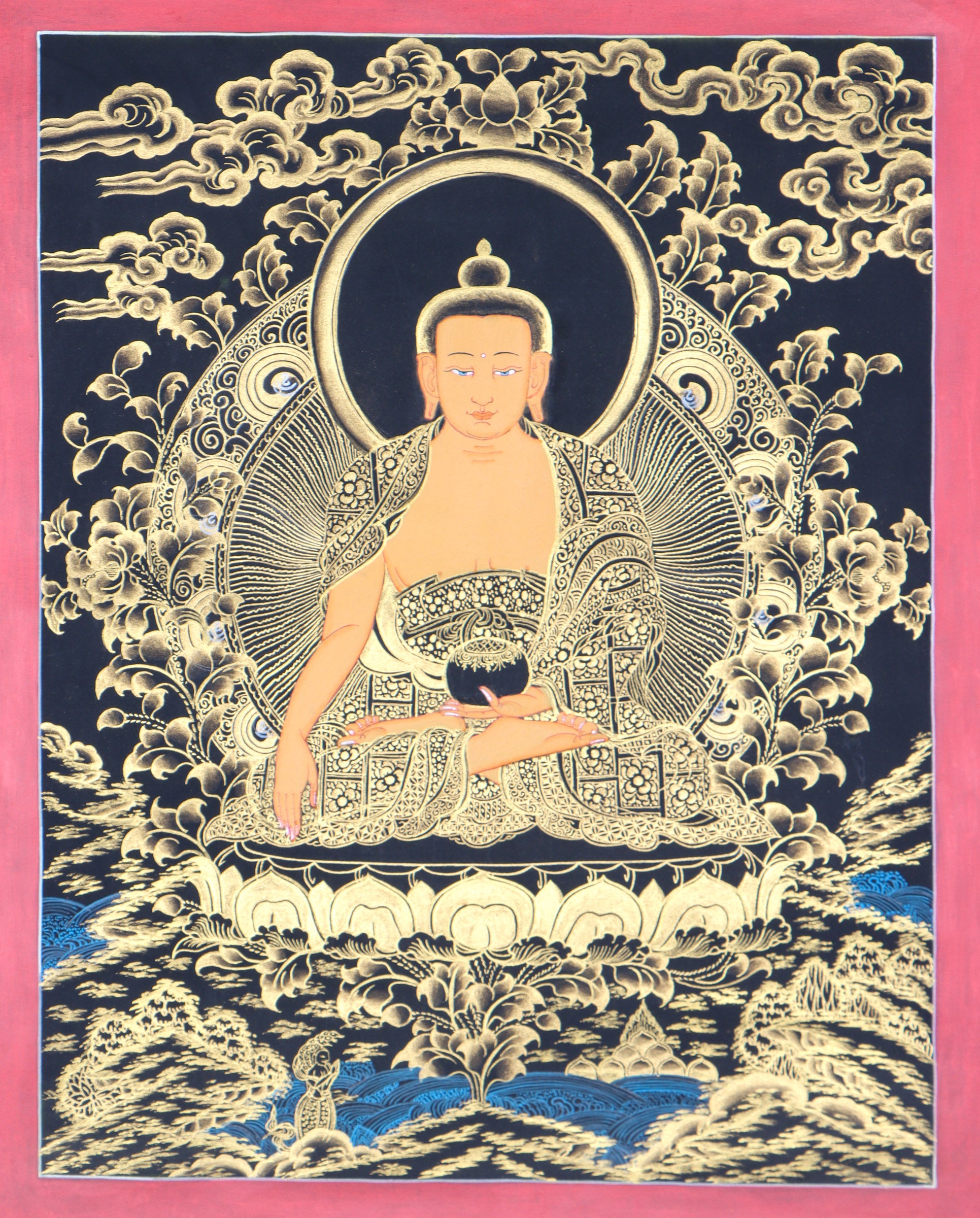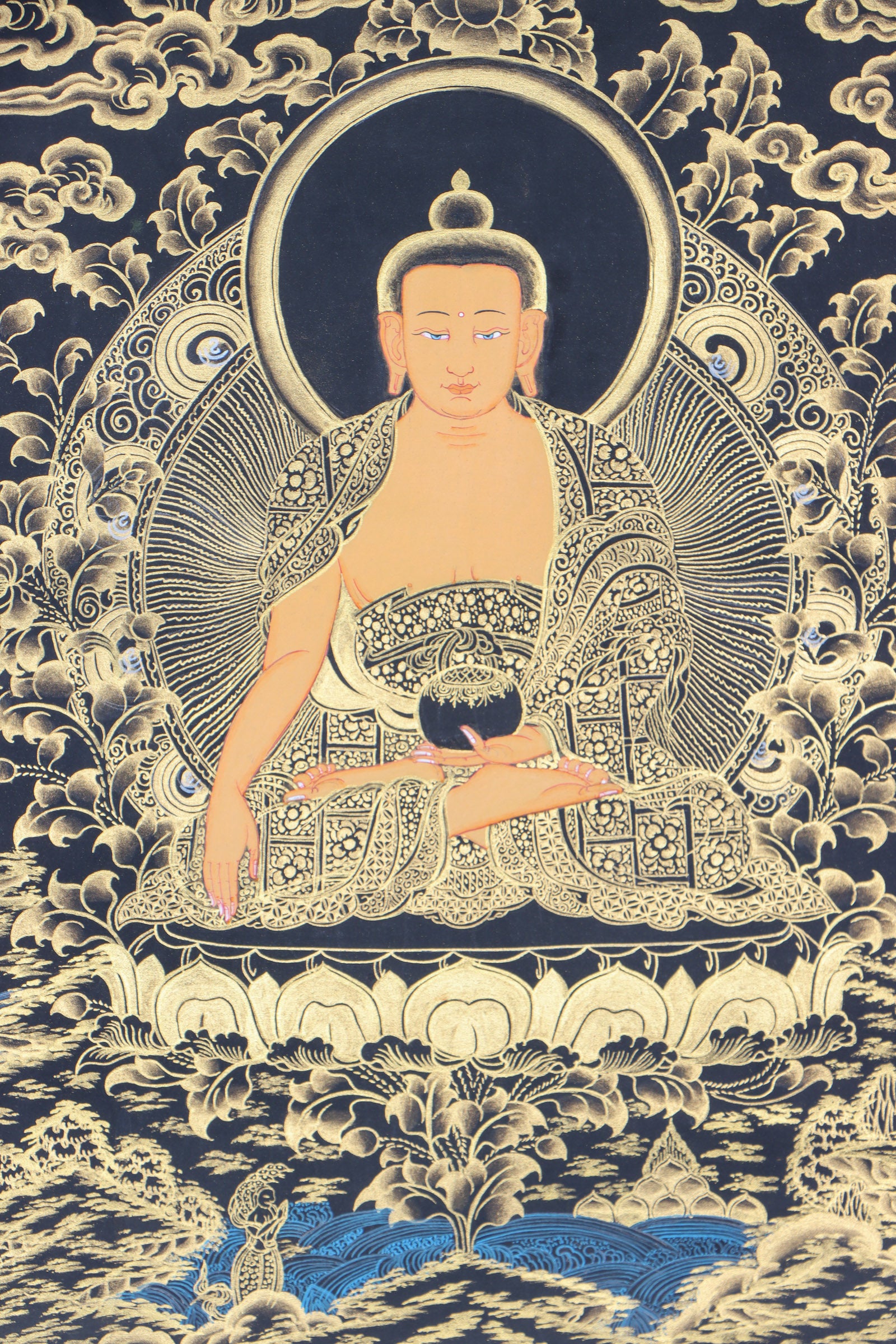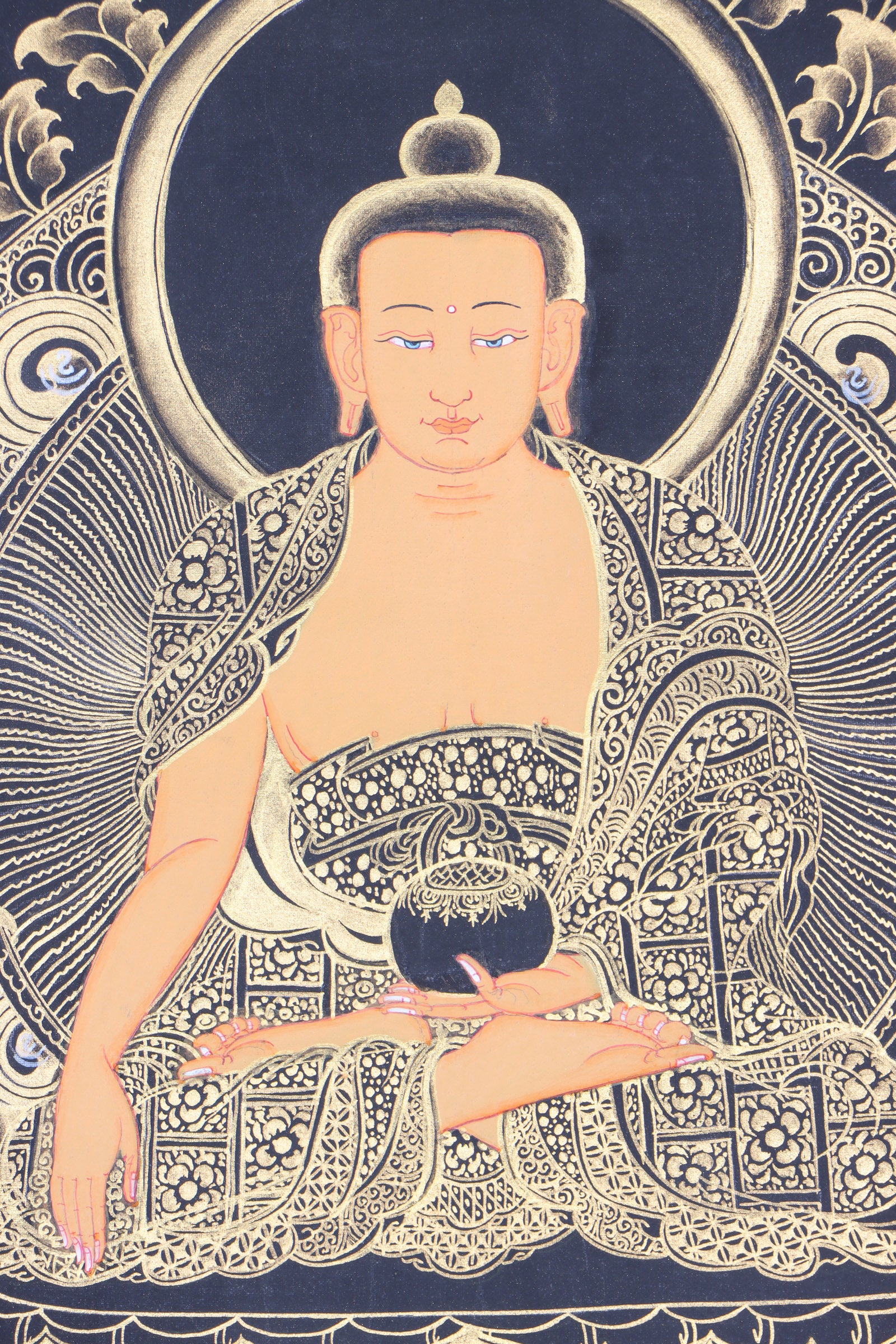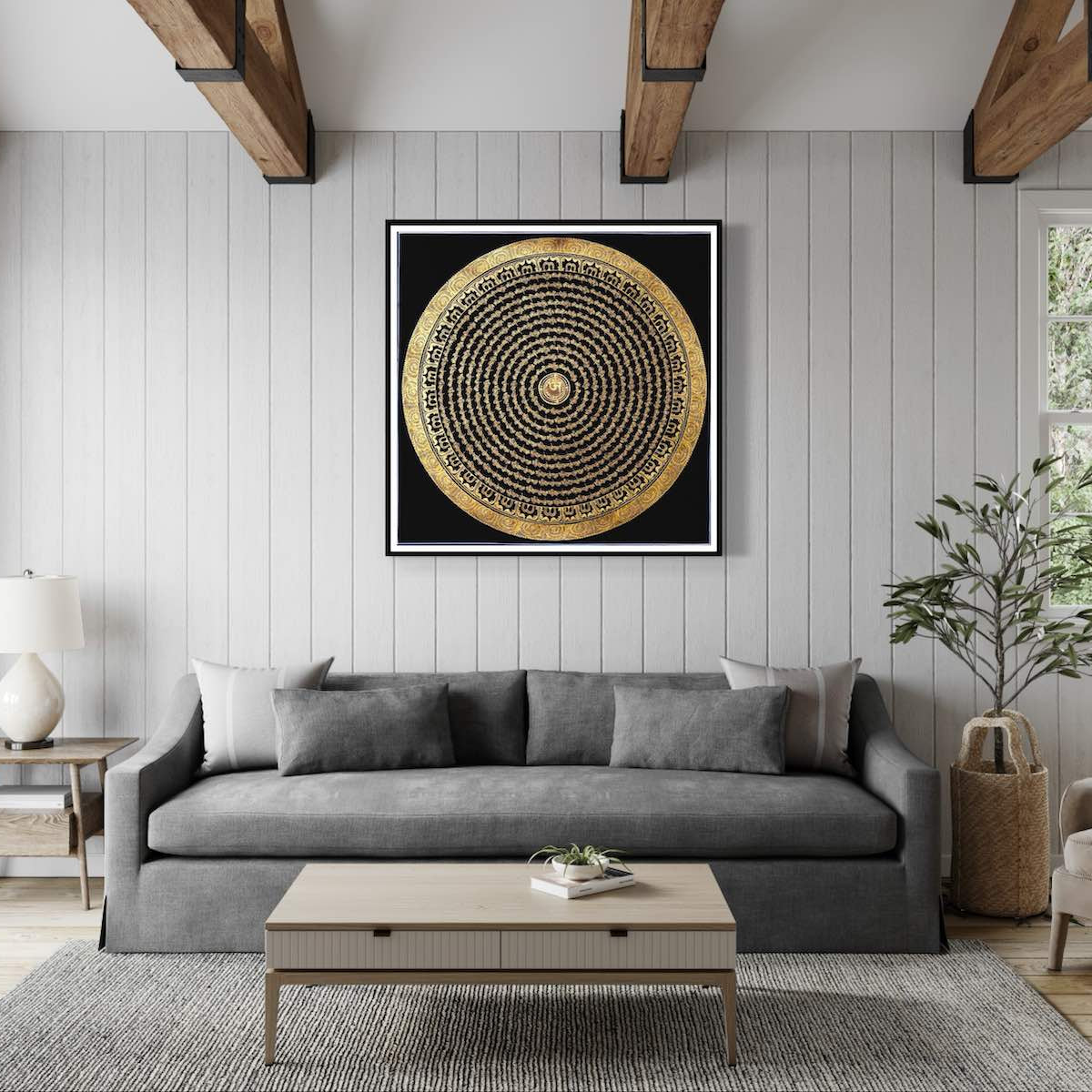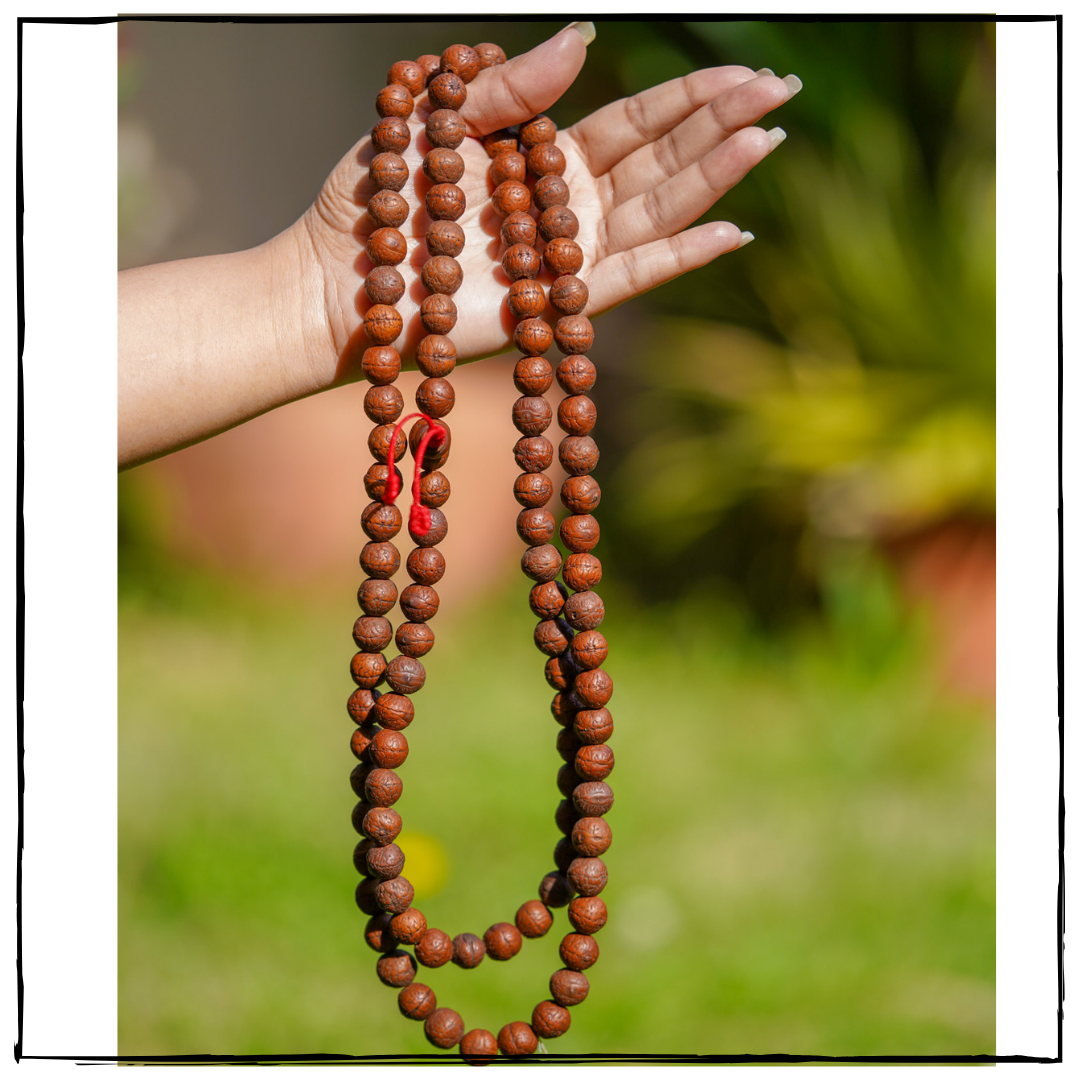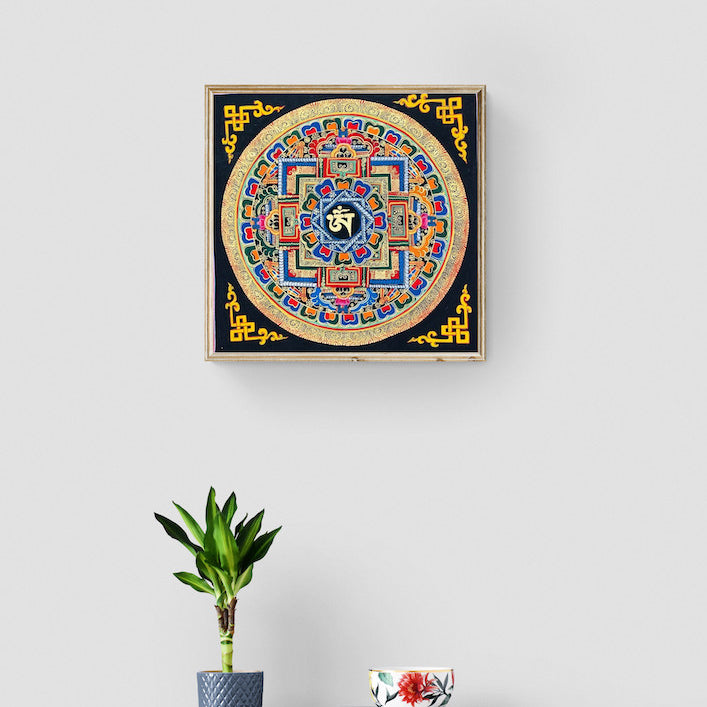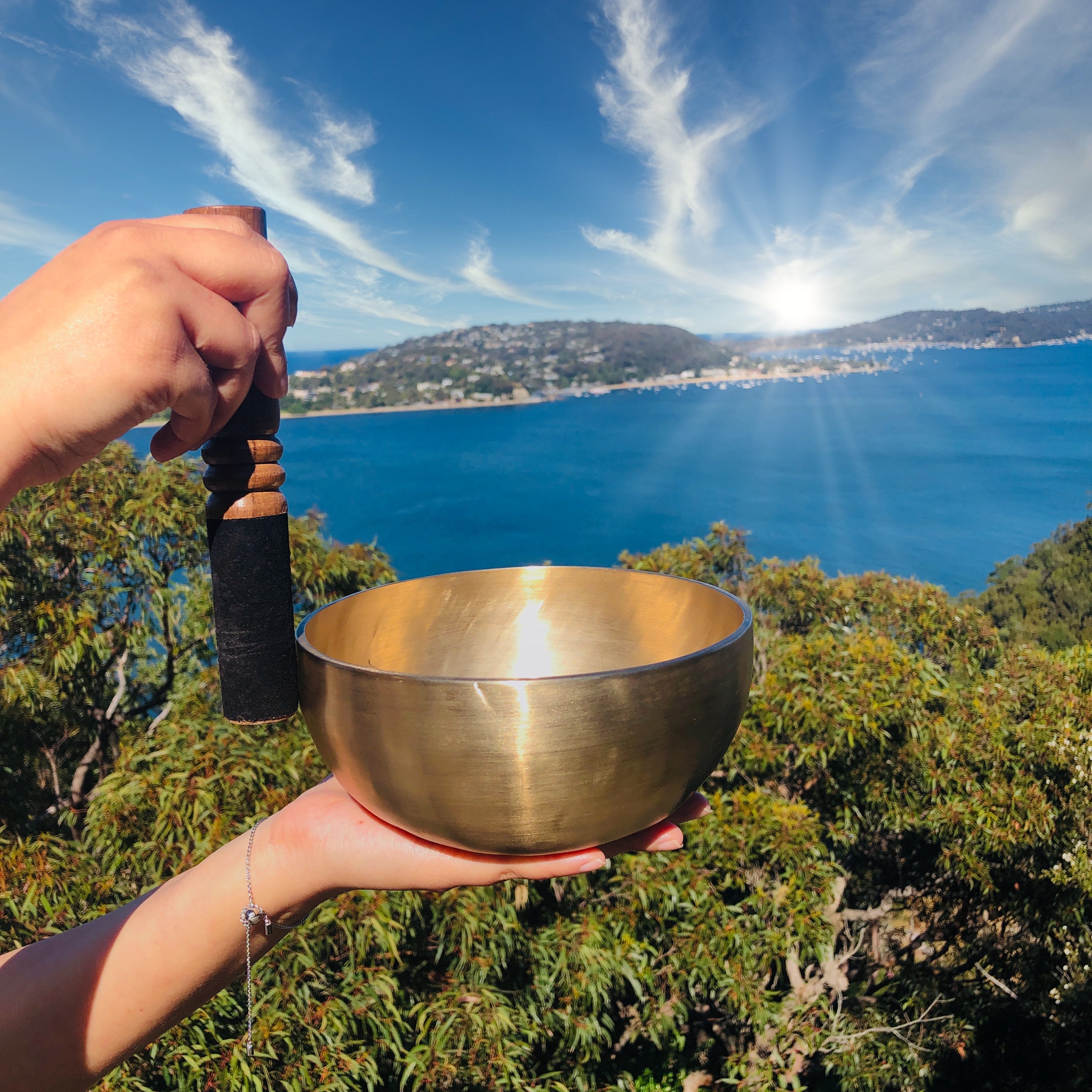Shakyamuni Buddha Thangka Painting
Couldn't load pickup availability
Description
Shakyamuni Buddha Thangka Painting is an iconic form of Tibetan Buddhist art. Having a special significance in Buddhist religious events, this painting seeks to symbolize the importance of Shakyamuni Buddha. Featuring Shakyamuni Buddha in the dhyana mudra, the right hand in bhumisparsha mudra and left hand holding a bowl, the details of this art accurately portray a traditional image of Shakyamuni Buddha, from his ushnisha to his robes and surrounding symbols.
The Thangka painting features a Shakyamuni Buddha seated on a lotus pedestal, symbolizing enlightenment and ascension. The warm orange tone of the Buddha is enhanced by the figures in the background, commonly representing Bodhisattvas, disciples, or figures of protection. The painting emits feelings of meditation, wisdom, and tranquility, providing a sense of peace and enlightenment.
Shakyamuni Buddha Thangkas are widely used within Tibetan Buddhism - from religious contemplation to enlightenment lessons and devotional activities. This intricate artworks depict the life and teachings of the Buddha, encouraging viewers to reflect on their own path to enlightenment. Monasteries, temples, and homes feature Thangkas as items of veneration and spiritual advancement.
Product Specification:
- Hand Painted
- Materials: Semi-Precious Natural Minerals
- Base: Cotton Canvas
- Origination: Nepal

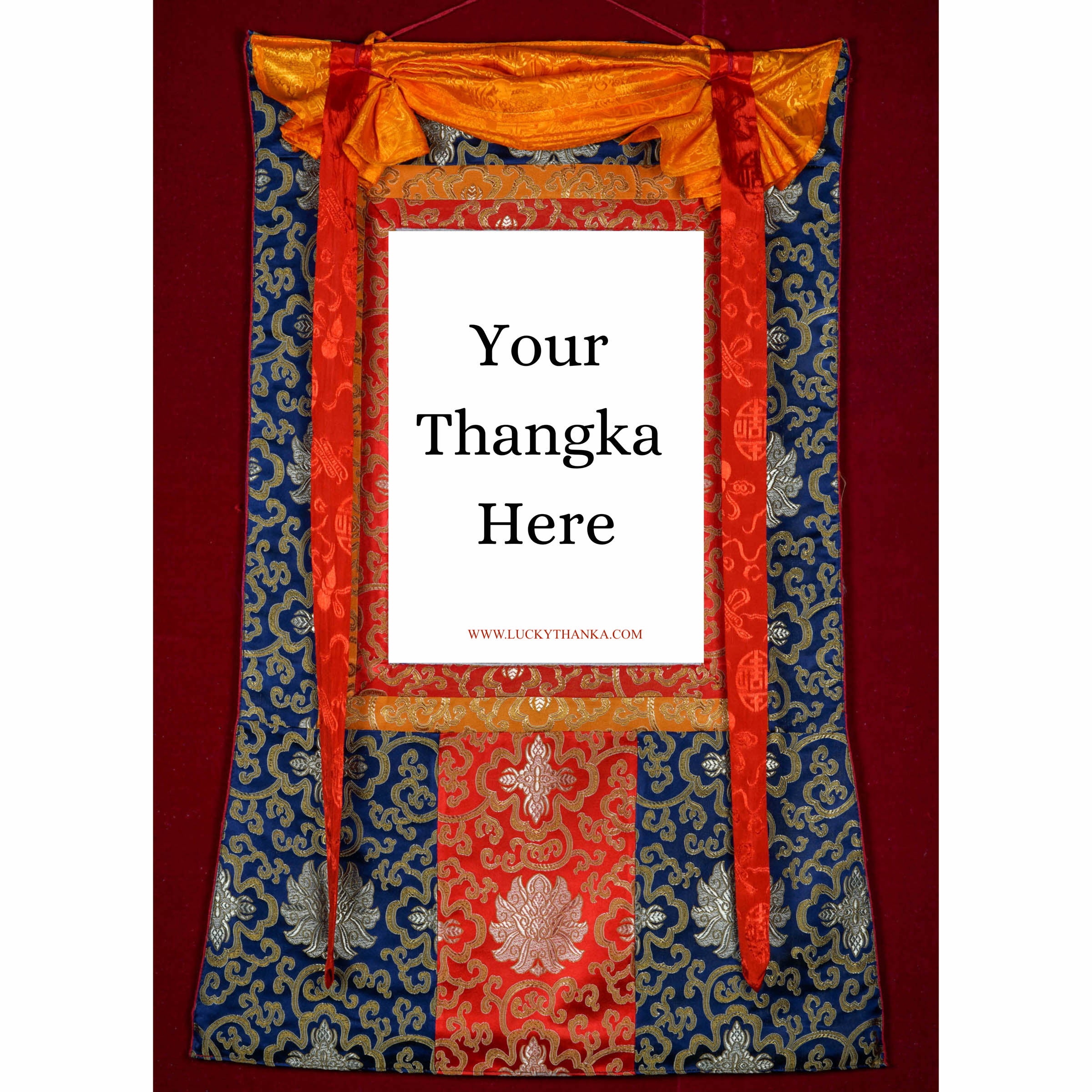
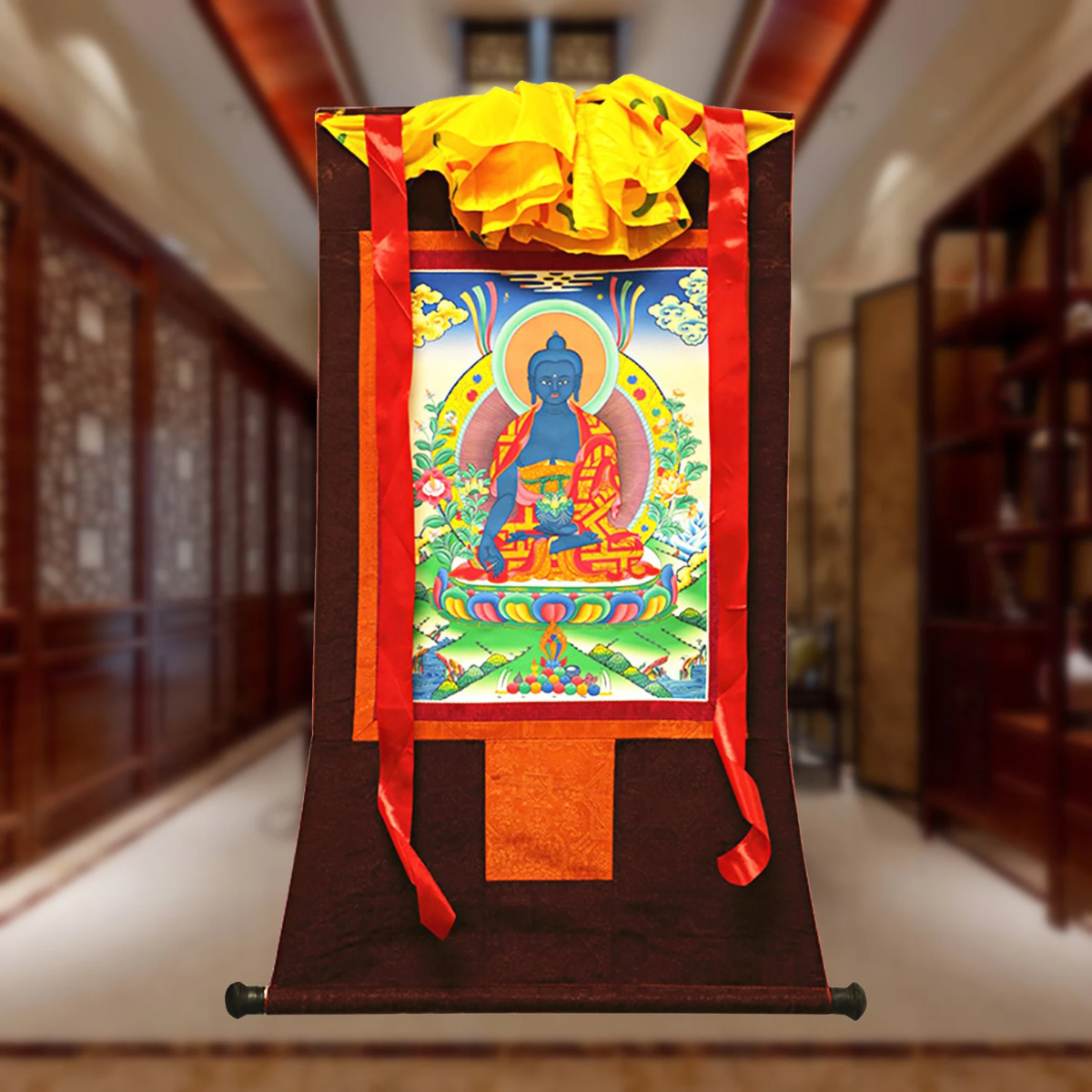
Hand Embroidery Brocade
Want to add a Brocade to your beautiful Thangka Painting? Traditional Style Brocade has been one of the most popular form of mounting as it has a greater religious merit.
Note: Make sure you have added the Thangka to your cart first.
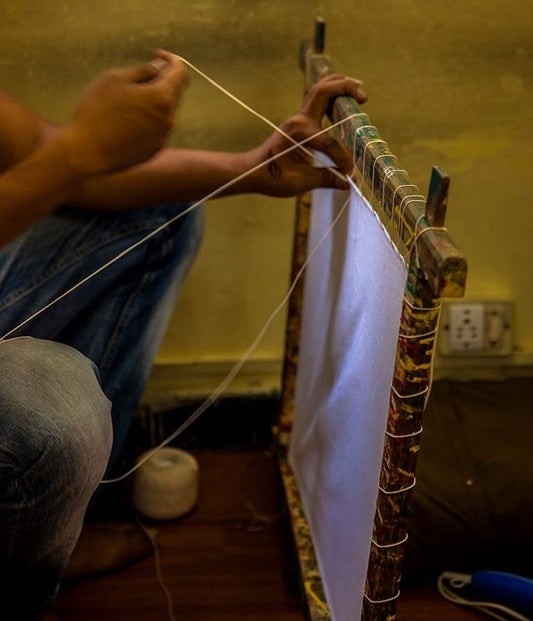
100% Cotton Canvas
Preparing the Cotton canvas before starting to paint a Thangka. This process includes washing, drying, stretching, sizing and everything needed to make a perfect base for the thangka to last for centuries.
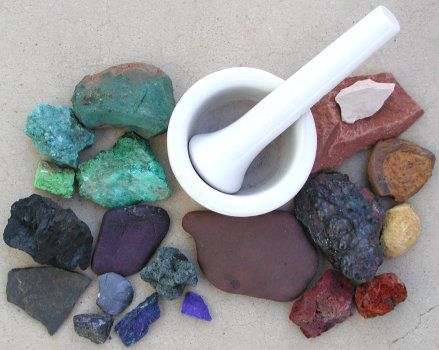
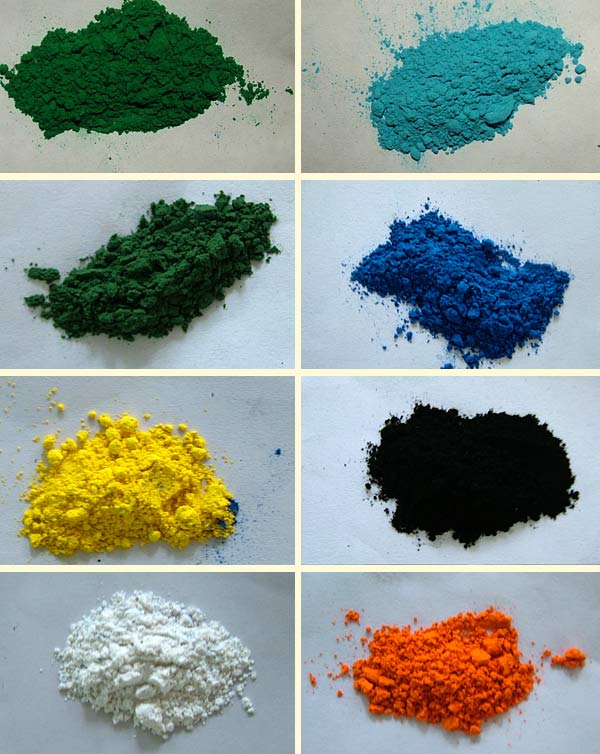
Natural Minerals
Thangka Paintings are painted using the natural minerals. These are firstly grind into the powder form and then used in the thangka as a paint.



